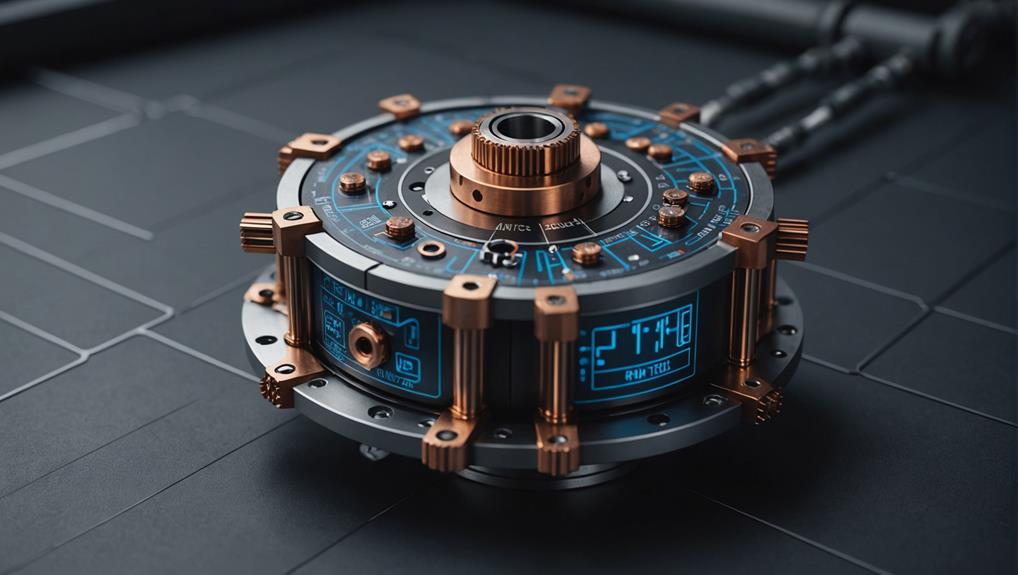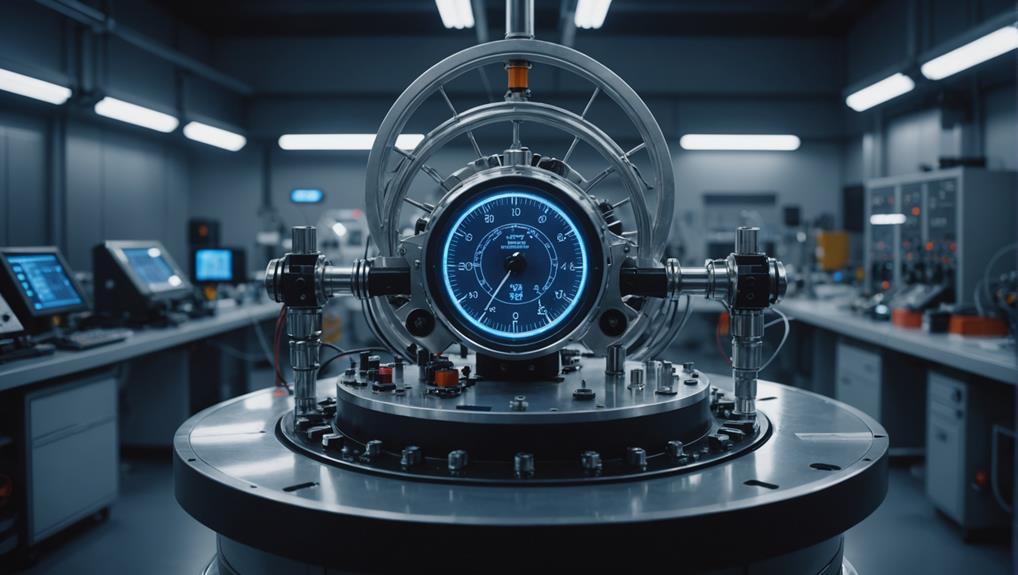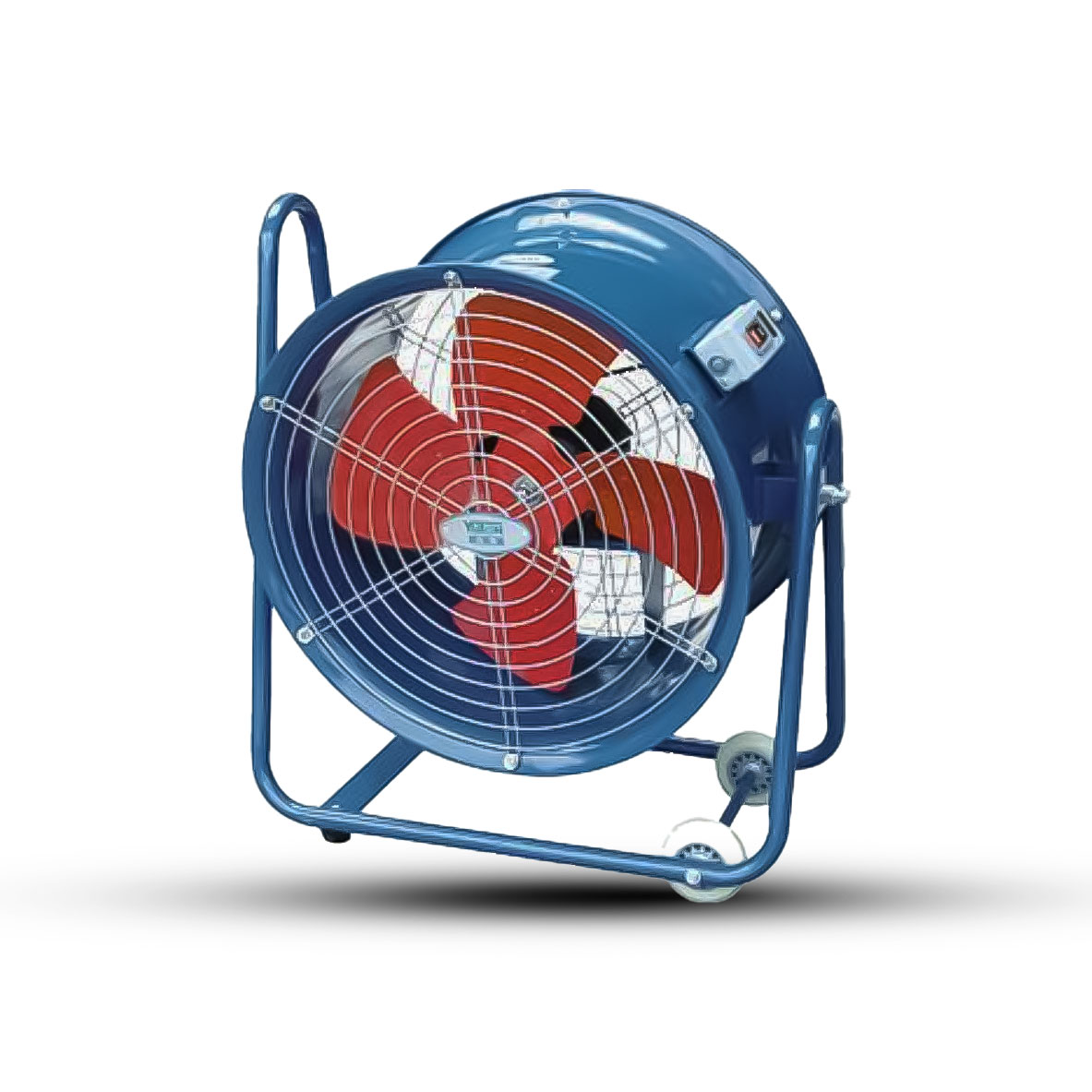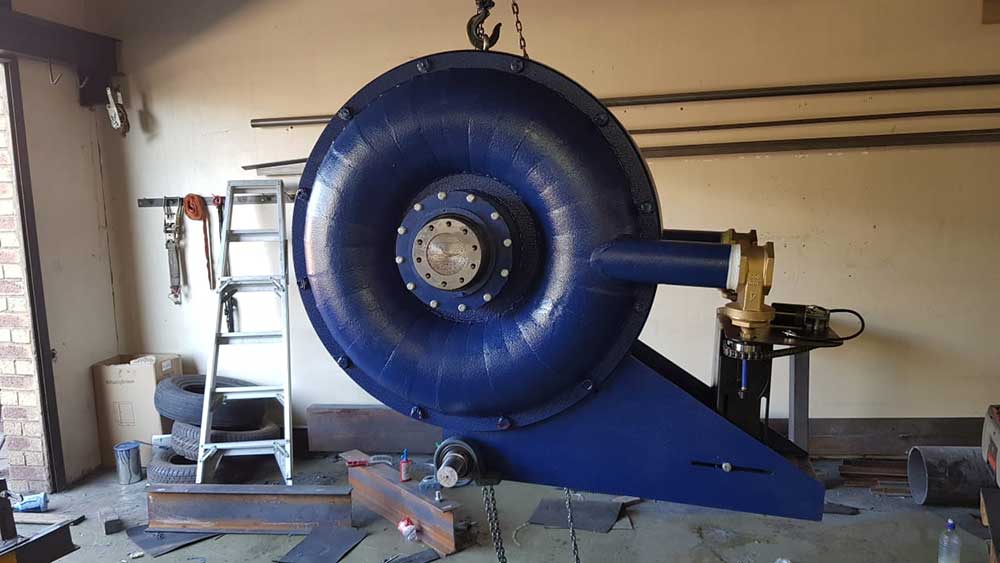
How Dynamometers Enhance Engine Diagnostics and Testing
Necessitating precise measurements, dynamometers unlock the secrets of engine performance, but what else can they reveal about engine diagnostics and testing?
Inertia dynamometers, which measure power through the acceleration of a known mass load, operate on distinct principles and mechanisms compared to other types, including loading dynamometers.
These dynamometers simulate real-world driving conditions with high accuracy, whereas loading dynamometers apply a variable load to the prime mover to measure its ability to hold or move the RPM associated with the braking force applied.
Each type has its strengths and limitations, making it vital to understand their comparative advantages to choose the most suitable type for specific testing requirements.
The complexities of their applications come into sharp focus, revealing the importance of precise calibration and control.
Inertia Dynamometer Principles Explained
The underlying principle enabling Inertia Dynamometers to accurately measure rotational speed and torque of rotating machinery lies in the fundamental concept of inertia, which is the tendency of an object to resist changes in its motion.
An inertial mass connected to the rotating shaft of the machinery being tested is utilised in inertia dynamometers. As the shaft rotates, it imparts its motion to the inertial mass, which experiences a force proportional to its acceleration.
This force is then measured, allowing calculation of the rotational speed and torque of the machinery.
The inertial mass is a critical component of the inertia dynamometer, providing the necessary resistance to motion.
A larger inertial mass results in more accurate measurements. Careful design of the inertial mass and its connection to the rotating shaft enables inertia dynamometers to achieve high levels of precision and reliability in measuring performance of rotating machinery.
A fundamental aspect of dynamometer testing involves applying a resistive load to the engine, which is precisely what a loading dynamometer is designed to do.
This type of dynamometer measures power through torque and RPM, providing a more precise representation of real-world conditions. The loading dynamometer's working mechanism involves applying a variable load to the prime mover to measure its ability to hold or move the RPM associated with the braking force applied.
Strain gauges accurately measure force and calculate horsepower, offering precise output measurements at the wheel location.
A load cell in a loading dynamometer accurately measures the torque, and the output is plotted on the computer screen, providing a precise representation of the engine's power. This makes loading dynamometers suitable for tasks that require precise and consistent results, such as testing specific load conditions.
They are often used in applications like emissions testing and certification, where accurate power measurement is essential. Accurately measuring torque and load, loading dynamometers provide an in-depth insight into an engine's performance.
The measurement of power is a critical aspect of dynamometer testing, and two common methods employed to achieve this are loading dynamometry and inertia dynamometry.
Each method has its unique strengths and limitations, making them suitable for different testing scenarios.
The key differences between these methods lie in their approaches to power measurement.
Inertia dynamometers measure power by evaluating the acceleration of a known mass load, providing a more realistic simulation of dynamic driving conditions for precise power measurement.
Loading dynamometers, on the other hand, employ strain gauges to accurately measure force and calculate horsepower, providing precise output measurements at the wheel location.
Inertia dynamometers calculate force based on acceleration and mass, simulating the sensation of acceleration on the road.
Conversely, loading dynamometers apply resistance to the engine, measuring power through torque and RPM for a more precise representation of real-world conditions.
The choice between inertia and loading dynamometers ultimately depends on the specific requirements of the dynamometer test.
Inertia dynamometers excel in replicating road load conditions, whereas loading dynamometers provide accurate and consistent results under diverse load conditions.
One of the primary advantages of inertia dynamometers lies in their ability to replicate real-world driving conditions with uncanny accuracy, thereby providing a more realistic testing environment for engineers and researchers.
In accurately simulating the power output during acceleration, they allow for more realistic testing and data collection. The testing range of an inertia dynamometer starts above the idle position and progresses to maximum RPM, mimicking the dynamic conditions encountered on the road.
This thorough testing range provides a more extensive portrayal of the torque/power curve, offering a more in-depth insight into an engine's performance. An inertia dynamometer's fixed inertial mass load enables accurate measurement of power output, especially during rapid acceleration, making it well-suited for testing high-performance engines and motors, which are characterised by high torque and RPM outputs.
In providing a realistic and accurate testing environment, inertia dynamometers enable engineers and researchers to collect reliable data and make informed decisions.
Inertia dynamometers, despite their ability to replicate real-world driving conditions with high accuracy, are not immune to performance discrepancies.
These discrepancies can be attributed to diverse factors, including differences in vibration, wear rates, and thermal behaviour.
Inertia dynamometers exhibit higher and broader vibrations in the normal direction compared to reduced-scale dynamometers, which can affect power output and load conditions.
The vibration discrepancy has a significant impact on the testing results.
The specific wear rate of brake materials shows a comparable range for both pin-on-disc and reduced-scale dynamometer tests, but with different PV sensitivity, leading to disparities in frictional losses.
This difference in wear rates affects the overall performance evaluation.
Peak values in the pin-on-disc test correlate well with the final values of the reduced-scale dynamometer test for particulate number concentration (PNC), indicating differences in emission patterns.
This correlation has significant implications for emission testing.
The coefficient of friction (CoF) exhibits higher sensitivity to PV in pin-on-disc tests compared to reduced-scale dynamometer tests, leading to disparities in performance evaluation.
This sensitivity difference affects the accuracy of the test results.
These performance discrepancies highlight the importance of considering multiple testing methods and factors when evaluating the performance of inertia dynamometers.
Researchers and engineers must acknowledge and grasp these differences to develop more thorough and accurate testing protocols.
Temperature variations and humidity effects are critical factors to ponder in dynamometer testing, as they markedly impact the accuracy of test results.
Temperature changes, in particular, affect an engine's power output, while humidity influences air density and engine performance.
Grasping the effects of these environmental factors is vital to guarantee reliable and accurate testing outcomes.
Environmental factors, including humidity, play a crucial role in guaranteeing the accuracy of dynamometer test results.
Humidity, in particular, has a significant impact on the reliability of test data.
Inertia dynamometers are more susceptible to humidity effects due to their reliance on acceleration and mass load measurements, which can be impacted by air density changes caused by humidity.
A 10 per cent increase in humidity can result in a 1-2 per cent decrease in measured power output, highlighting the importance of controlling humidity levels during testing.
Loading dynamometers, in contrast, are less affected by humidity due to their direct measurement of force and torque, making them a more reliable option in humid testing environments.
To minimize humidity effects, it is recommended to maintain a consistent humidity level between 40-60 per cent during testing, and to ensure proper cooling and ventilation systems are in place to prevent overheating and moisture buildup.
Most strikingly, a mere 5°C variation in ambient temperature can markedly influence the accuracy of dynamometer test results, emphasizing the importance of controlling thermal conditions during testing.
Temperature variations can profoundly impact the performance of inertia dynamometers, which are designed to provide precise measurements of torque and speed. Even a slight change in temperature can affect the mechanical properties of the dynamometer's components, leading to inaccurate readings.
Conducting testing under controlled thermal conditions is vital to counteract this effect. Maintaining a steady state temperature environment, where the temperature remains constant throughout the testing process, minimizes the influence of temperature variations on the dynamometer's performance.
This ensures more accurate and reliable test results. Inertia dynamometers, in particular, are sensitive to temperature changes, making it crucial to maintain optimal thermal conditions during testing. Engineers can guarantee that their test results are accurate and trustworthy, allowing them to make informed decisions with confidence, if they control temperature variations.
When selecting a dynamometer, it is vital to weigh the suitability factors for each type to guarantee accurate and reliable results.
Inertia dynamometers, for instance, are well-suited for rapid power assessments and diagnosing problems, whereas load cell calibration needs and steady-state testing advantages must also be taken into account.
Selecting the right type of dynamometer is crucial for achieving accurate and reliable test results.
Inertia dynamometers, in particular, are suited for specific applications due to their unique characteristics.
Several factors contribute to an inertia dynamometer's suitability.
It is ideal for rapid power assessments and diagnosing problems, thanks to its ability to simulate road load conditions and provide accurate acceleration measurements.
This dynamometer excels in simulating dynamic loading, making it a great choice for testing engines under real-world conditions.
Accurate testing results are ensured, especially in the context of measuring inertia and loading.
Furthermore, inertia dynamometers are particularly useful in the automotive industry for testing and certification, especially for electric and hybrid vehicles.
Accurate power output measurements in inertia dynamometers rely heavily on the calibration of load cells, which are sensitive to various environmental and operational factors.
Inertia dynamometers, commonly used in diverse industrial settings, require their load cells to be calibrated regularly to guarantee accurate and reliable results. The recommended calibration frequency is every 6-12 months or after 1000-2000 test cycles, depending on the usage and operating conditions.
Temperature, humidity, and vibration are factors that load cell calibration must account for, as these can affect the dynamometer's accuracy and reliability.
The calibration process involves applying known loads to the dynamometer and comparing the results to the load cell's output, with an acceptable tolerance of ±1-2% for most applications.
Regular load cell calibration is vital for maintaining the dynamometer's certification and ensuring compliance with industry standards, such as those set by the Society of Automotive Engineers (SAE).
Inertia dynamometers equipped with advanced instrumentation software can simplify the calibration process and provide real-time data analysis, reducing the need for manual adjustments and minimising the risk of human error.
Steady-state testing offers a distinct advantage in applications where precise control over load conditions is crucial, particularly in scenarios where constant speed testing is necessary.
This type of testing is ideal for applications that require consistent load conditions, such as generators, tractors, and water pumps.
Steady-state testing provides several benefits.
Load sensors and actuators guarantee precise control over testing conditions, resulting in accurate results.
Constant speed testing is also achievable, which is indispensable in applications where speed variations can affect performance.
Precise load control is another advantage of steady-state testing, making it an ideal choice for applications where load control is paramount.
Furthermore, steady-state dynamometers eliminate frictional losses and inertia, which can affect power output and accuracy, providing more reliable results.
A dynamometer's approach to measuring engine performance is largely defined by its prioritisation of either precision or realism.
Inertia dynamometers prioritise precision, providing accurate power measurements through a focus on acceleration and drum spool-up speed.
This approach enables rapid power assessments and diagnosing problems, making them ideal for fine-tuning engine performance and optimisation.
In contrast, loading dynamometers emphasise realism, replicating actual load conditions and offering insights into engine performance in real-world driving scenarios.
They excel in testing specific load conditions, making them suitable for evaluating the environmental impact of vehicles.
The precision of inertia dynamometers is vital for fine-tuning engine performance, whereas the realism of loading dynamometers is pivotal for evaluating power output changes under different conditions.
Inertia dynamometers calculate force based on acceleration and mass, simulating the sensation of acceleration on the road.
Loading dynamometers apply resistance to the engine, measuring power through torque and RPM for a more precise representation of real-world conditions.
Ultimately, the choice between precision and realism depends on the testing goals and requirements.
Inertia dynamometers boast a distinctive set of advantages that set them apart from other types of dynamometers.
When measuring power, they provide more accurate and consistent results, making them a reliable choice for motor testing.
Inertia dynamometers are better suited for high-performance motor testing, as they can handle higher power outputs and provide more precise control over testing conditions.
Their design makes them less prone to overheating and wear compared to brake dynamometers, resulting in a more reliable option for repeated testing.
With faster testing and data collection, inertia dynamometers allow for quicker identification of motor weaknesses and areas for improvement.
Additionally, they provide a more realistic simulation of dynamic driving conditions, making them ideal for tasks like emissions testing and certification.
These advantages make inertia dynamometers an attractive option for those seeking precise and efficient motor testing.
Inertia dynamometers accurately measure power through the acceleration rate of a known mass load, providing a unique set of benefits that set them apart from other types of dynamometers.
Loading dynamometers, despite their advantages, are not without limitations.
One such limitation lies in their potential to produce inaccurate power readings, which can be attributed to different factors including sensor errors and data processing inconsistencies.
In addition, load calculation methods and dyno sweep test limitations can also impact the accuracy and reliability of the results obtained from these devices.
Torque measurements can be substantially skewed when dynamometers are subjected to rapid changes in load, yielding inaccurate power readings that can have far-reaching consequences in fields such as engine testing and electric motor development.
This limitation is particularly significant when using loading dynamometers, which rely on external loading to measure the power output of an engine or motor.
Inertia dynamometers, on the other hand, measure the power output directly, reducing the likelihood of inaccurate power readings.
Inaccurate power readings arise from diverse sources, including inadequate sampling rates that fail to capture rapid changes in load, insufficient sensor resolution leading to inaccurate torque measurements, inadequate dynamometer calibration resulting in incorrect power calculations, and engine power fluctuations that can be difficult to account for when calculated using traditional methods.
These limitations have significant implications for engine testing and electric motor development, where accurate power readings are vital for optimising performance and efficiency.
Inertia dynamometers offer a more reliable and accurate means of measuring engine power, making them an attractive alternative to traditional loading dynamometers.
The load calculation methodology employed by loading dynamometers is a significant source of inaccuracy, relying on direct force measurement using strain gauges prone to signal noise and requiring precise calibration.
This force measurement method is susceptible to environmental factors such as temperature changes, humidity, and vibrations, which impact accuracy.
Inertia dynamometers, on the other hand, calculate power based on acceleration and mass, providing a more direct measurement of power output less susceptible to environmental influences.
This approach enables inertia dynamometers to simulate realistic load scenarios, better representing real-world driving conditions. Furthermore, inertia dynamometers provide faster and more consistent measurements, unlike loading dynamometers that typically require longer testing times to achieve accurate results.
Inertia dynamometers offer a more reliable and accurate method of measuring power output when it comes to load calculation.
Considering the applied load and acceleration, inertia dynamometers provide a thorough grasp of an engine's performance.
The load calculation method used in loading dynamometers has significant limitations, making inertia dynamometers a more suitable choice for precise power measurement.
Dyno sweep tests, a common method employed by loading dynamometers, are prone to significant limitations that can lead to inaccurate power measurements.
These limitations can have a profound impact on the accuracy of power output readings, making it crucial to comprehend the flaws innate in this testing method.
Some of the limitations of dyno sweep tests include the fact that inertia of the dyno's roller can inflate DJHP readings, leading to inaccurate power measurements.
The Acceleration Fuel Map is triggered, causing fuel mixture readings to be inaccurate and affecting power output.
Furthermore, DJHP measurements are inflated due to the "puff number" added to the measurement, which is not accounted for in true rear wheel horsepower (RWHp) calculations.
Moreover, dyno sweep tests are unable to provide a true representation of power output, as true RWHp measurements require a steady-state test procedure unaffected by inertia.
These limitations highlight the importance of using inertia dynamometers that can provide accurate power measurements, unaffected by the drawbacks of dyno sweep tests.
Users must be aware of these limitations when choosing a dynamometer for their power measurement needs to ensure accurate results.
Inertia Dynamometers vs. Other Types: A Comparative Analysis
Hyper Power explains the principles and advantages of inertia dynamometers, highlighting their superiority over other types of dynamometers.
Inertia Dynamometer Principles Explained
————————————–
Inertia dynamometers operate on the principle of measuring the angular acceleration of a rotational system in response to an applied torque. This is achieved by using a rotor with a known moment of inertia, which is driven by the test specimen. The rotor's angular acceleration is directly proportional to the applied torque, allowing for precise power measurement.
Loading Dynamometer Working Mechanism
————————————-
Loading dynamometers, in contrast, measure power by applying a controlled load to the test specimen. This load can be in the form of electrical, hydraulic, or mechanical resistance. The power output is calculated based on the load applied and the resulting speed of the test specimen.
Comparison of Power Measurement Methods
—————————————–
Inertia dynamometers measure power directly, whereas loading dynamometers measure power indirectly. Inertia dynamometers are more accurate and responsive, particularly at low speeds and high torques. Loading dynamometers, however, are better suited for high-speed, low-torque applications. If you have any questions about our Custom Dyno Solutions, please do not hesitate to contact us.
Real-World Simulation and Accuracy
———————————–
Inertia dynamometers provide a more realistic replication of real-world operating conditions, as they do not introduce any artificial load on the test specimen. This results in more accurate power measurements and a better comprehension of the test specimen's behaviour. Our team can assist you with Installation and Setup to ensure accurate results.
Performance Discrepancies Analysis
———————————–
The performance of inertia and loading dynamometers can be affected by distinct factors, including rotor inertia, bearing friction, and temperature. Inertia dynamometers are more sensitive to these factors, which can lead to discrepancies in power measurement. For expert guidance on Training and Certification, reach out to us.
Suitability Factors for Each Type
————————————-
Inertia dynamometers are suitable for applications requiring high accuracy and responsiveness, such as engine testing and aerospace research. Loading dynamometers are better suited for applications requiring high power output and low accuracy, such as industrial machinery testing. If you need help with Technical Support and Maintenance, our team is here to help.
Precision Vs Realism in Dynamometers
—————————————–
Inertia dynamometers prioritise precision over realism, whereas loading dynamometers prioritise realism over precision. The choice between the two depends on the specific requirements of the application. For Software Updates and Upgrades, contact Hyper Power.
Advantages of Inertia Dynamometers
—————————————–
Inertia dynamometers offer high accuracy, responsiveness, and realism, making them ideal for applications requiring precise power measurement. Our Diagnostics and Performance Analysis services can help you get the most out of your dynamometer.
Limitations of Loading Dynamometers
—————————————–
Loading dynamometers are limited by their indirect power measurement method, artificial load introduction, and lower accuracy, making them less suitable for applications requiring high precision. Consider our Rental Services for short-term dynamometer needs.
Final Assessment
In final assessment, inertia dynamometers offer superior accuracy, responsiveness, and realism compared to loading dynamometers. While loading dynamometers have their advantages, their limitations make them less suitable for applications requiring high precision. The choice between the two ultimately depends on the specific requirements of the application. For Dynamometer Testing Services and Accessories and Parts, contact Hyper Power.

Necessitating precise measurements, dynamometers unlock the secrets of engine performance, but what else can they reveal about engine diagnostics and testing?

Navigating the complexities of torque measurement requires a deep understanding of the underlying principles and mechanisms to ensure accurate results.

Precise control and optimization of engine performance await, but only for those who unlock the secrets of dynamometer-driven data analysis.

Gaining insight into the differences between inertia and brake dynamometers is crucial for ensuring accurate testing results in various industries.

Tapping into the precise measurement capabilities of dynamometers, uncover the secrets to optimizing fuel efficiency and slashing emissions in the automotive industry.

Witness the importance of rigorous safety protocols and best practices in dynamometer testing to avoid catastrophic failures and ensure accurate results.

Harnessing the nuances of precision measurement is crucial to avoiding costly errors in dynamometer testing, but what are the key factors to consider?

Witness the transformative power of dynamometers in unlocking your vehicle’s hidden performance potential, but only if you know how to harness their precision.





